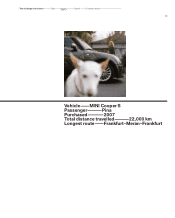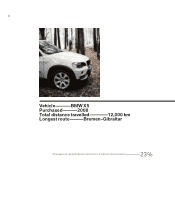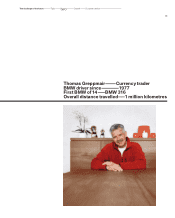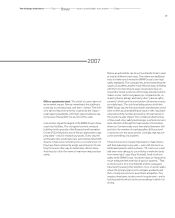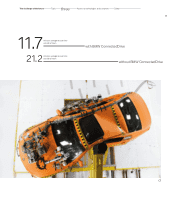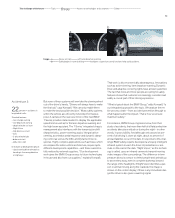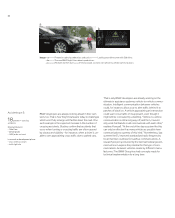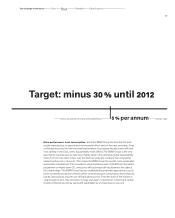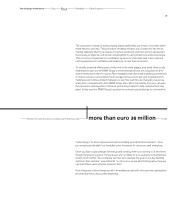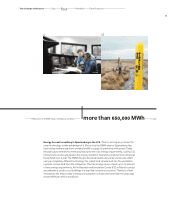BMW 2008 Annual Report Download - page 211
Download and view the complete annual report
Please find page 211 of the 2008 BMW annual report below. You can navigate through the pages in the report by either clicking on the pages listed below, or by using the keyword search tool below to find specific information within the annual report.52
The details are even more revealing: percent of acci-
dents in longitudinal traffic are rear-end collisions, often as
a result of lack of concentration, driving too closely or a
combination of both. We know today that in percent of
collisions at intersections the driver responsible for causing
the accident made no attempt to brake before the impact
and percent did not attempt a steering manoeuvre. Ac-
cording to official German statistics only about two percent
of accidents can be traced to technical defects – and those
are largely the result of poor vehicle maintenance. That
means accidents are nearly always due to drivers failing
to see things, driving inappropriately or misjudging the
situation.
These are shocking figures. But they reveal to engineers
like Klaus Kompaß where the remaining potential for
pre-
vention lies. According to the BMW safety chief, “The
person driving the car is the decisive factor. Humans have
definite strengths when it comes to driving, and there
are lots of things they do better than any technology. But
there are also areas where technology is superior to human
beings and where we can use it to help the driver either
avoid accidents – or at least mitigate the consequences.”
Sophisticated driver assistance systems installed in BMW
Group vehicles today already monitor the driver’s sur-
roundings
and provide the information needed to make
fast and responsible decisions. The active cruise control
system and the lane departure warning help the driver
manoeuvre safely. Intervention systems such as integral
active steering and the Dynamic Drive active stabiliser
system steady the car in dangerous situations and help
drivers perform their intended manoeuvres in the best way
possible. Intelligent navigation systems and the speed-
limit display supply the driver with relevant data on traffic
conditions and the maximum speed allowed.
Accident type 1:
41percent = driving
accidents.
Standard features:
– lane departure warning
– high beam assistant
– adaptive cornering lights
– active steering
In research or development phase
:
– curve info
In this they are assisted by engineers from the BMW
Group’s accident research team who analyse real-life acci-
dents and reconstruct the entire course of events using
computer models. For this purpose they evaluate their
own
accident data as well as data from the German Federal
Statistical Office, the German In-Depth Accident Study
project GIDAS and the renowned William Lehman Injury
Research Center in Miami in the United States which
works closely with BMW safety experts. By meticulously
sifting through all the data, accident researchers discover
more about what happens on the roads and how dan-
gerous situations arise. For instance, they established that
in percent of all fatal road accidents the driver loses
control of the vehicle on a straight road. This is followed in
second place by accidents in longitudinal traffic – that is,
collisions with oncoming traffic or vehicles ahead.
Colli-
sions while turning or crossing traffic account for percent
of all road fatalities, and those involving pedestrians cross-
ing the road make up percent.
91
percent of all road fatalities fall into one of four categories. For all four types of
accidents the BMW Group already has effective driver assistance systems on the
market or in development.



